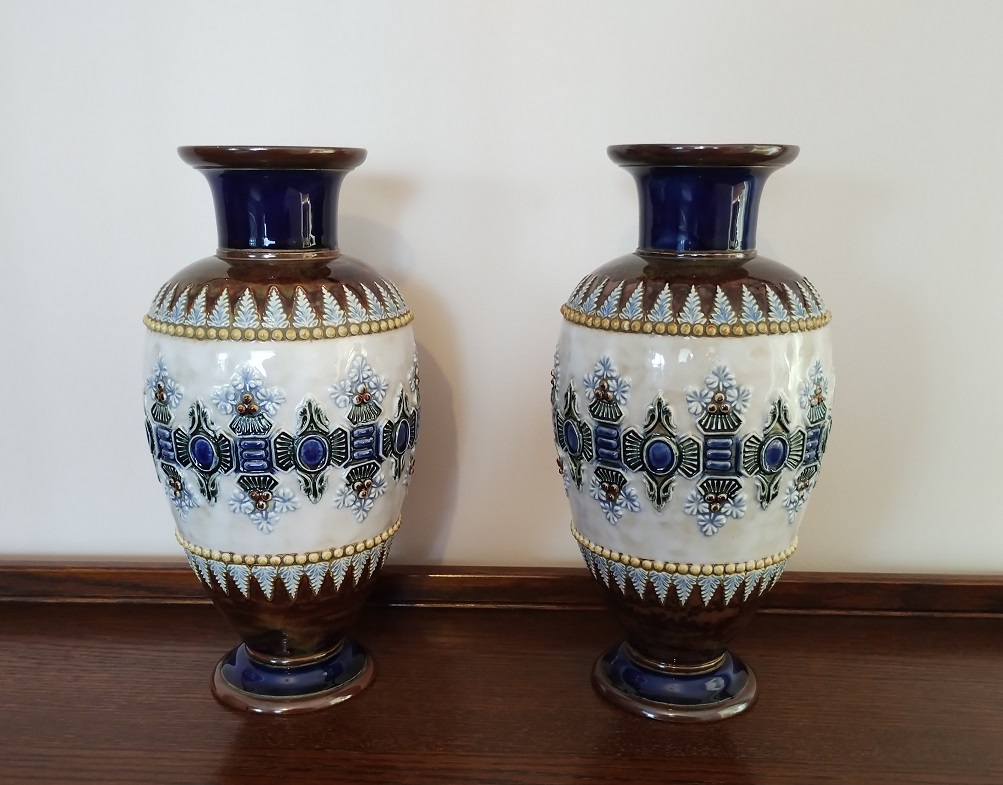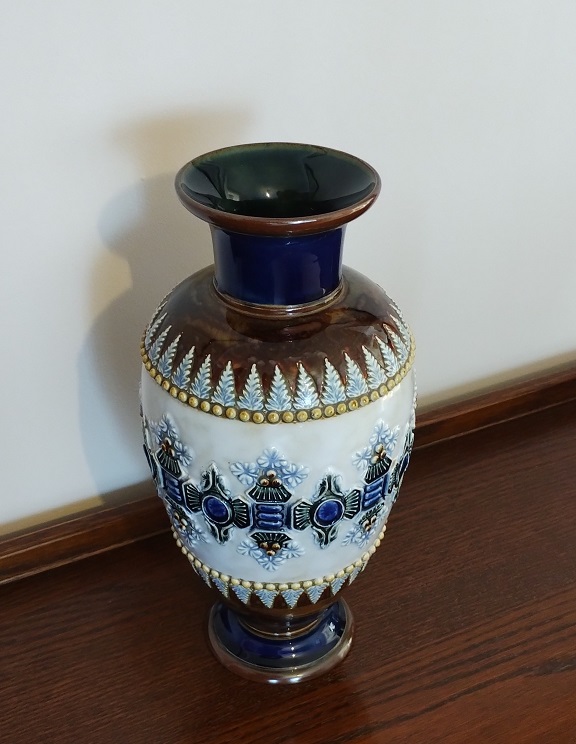
Collectors of Doulton ceramics are usually interested in the work produced in the last quarter of the 19th century, specifically from about 1871 when Henry Doulton began to employ students from Lambeth School of Art to create a range of art ceramics. Their blue, brown and cream glazes are a familiar sight in the catalogs of auction houses around the UK. The distribution is uneven though, with some auction houses getting collections of twenty to thirty pieces a couple of times a year whilst others get pieces only sporadically. We’re very fortunate to live within easy visiting distance of two regular sellers of Doulton: Kinghams in Moreton-in-Marsh and Fieldings in Stourbridge. Two or three times a year we’re able to get up close to some fantastic examples of Doulton produce. We’re frequent bidders on early Doulton work and occasionally we’re successful!
We purchased these two vases in 2020. At about 300mm high they’re eye-catching in any display. I think, to modern tastes, many Doulton works are unusually shaped even slightly awkward looking. Part of the appeal of these vases is their classic, baluster shape with tops and bases nicely in proportion. I’ve heard people say they don’t like the brown glazes used by Doulton. In this case I particularly like the combination of the cloud-like haziness of the brown adjacent to the deep blue around the neck and base. The patterned band also feels beautifully proportioned as well as being a lovely piece of work.

It’s an interesting question as to whether these vases are a true pair, or just two in the same design. Typically a pair would have part of the pattern being either left of right handed and to be a pair you would have one of each. In this case the pattern has no such feature so they could have been purchased as a pair or singly. Given the huge range of designs produced by Doulton, I’m sure these vases would have been bought together and have stayed together for over a hundred years.
The bases are marked as model number of 4674. This puts production between 1897 and 1903, probably at the earlier end of the range. A search of the Internet suggests there are a small number of these around, but I can see no reference to anyone else having two. As with most Doulton work, the ceramicists have left their signature marks on the bases. In this case we have two different ceramicists but, frustratingly, I can not identify either. This doesn’t mean the work is of lesser quality though. Close inspection shows them to be beautifully made and after all this time these remain in perfect condition.
For me, these vases are an excellent example of why Doulton remains popular with collectors. The vases are as impressive as they are beautiful. Like most Doulton offered for sale, the vases are robust and undamaged, looking as good as the day they were first sold. On top of that, a pair like these are remarkably modest in price. You can put together a good and varied collection without spending a fortune. The popularity of Doulton ceramics varies over time and I’m told it’s not a popular as it was, but good, undamaged pieces will be sought after.
Doulton received royal approval in 1901, becoming the more familiar Royal Doulton. If you’re interested, the history of the company is well documented on the Internet. For those wanting more detail, seek out Richard Dennis Publications’ excellent book “The Doulton Lambeth Wares” by Desmond Eyles and Louise Irving. The second edition published in 2002 is unlikely to be bettered.